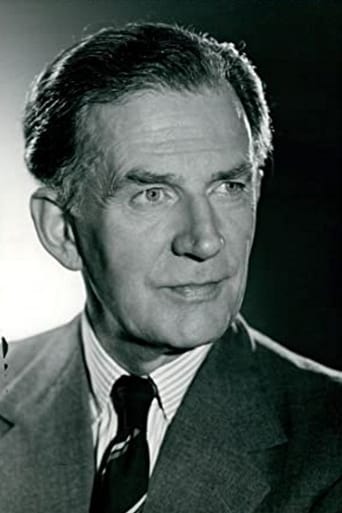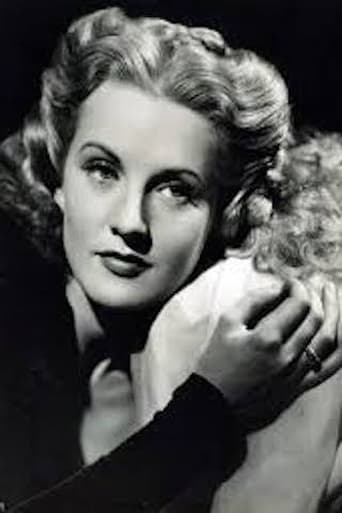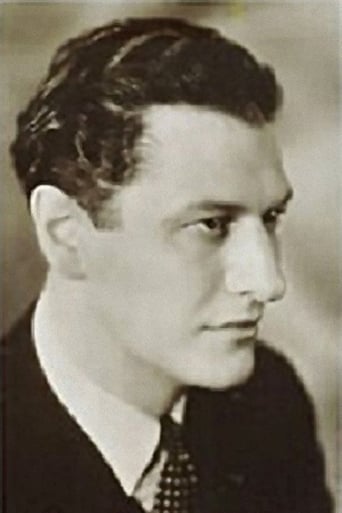SnoReptilePlenty
Memorable, crazy movie
PodBill
Just what I expected
Humaira Grant
It’s not bad or unwatchable but despite the amplitude of the spectacle, the end result is underwhelming.
Raymond Sierra
The film may be flawed, but its message is not.
bkoganbing
They Were Sisters casts Phyllis Calvert, Anne Crawford, and Dulcie Gray as three sisters who meet and marry their husbands right after World War I and the film is the story of the three marriages in those years between the World Wars. It's not unlike the Bette Davis-Errol Flynn film from Warner Brothers The Sisters. But believe me there are no characters in that one as dark and sinister as James Mason here.Phyllis Calvert is the nice one, the real glue that holds the extended family together. She meets and marries Peter Murray-Hill who was her husband in real life. They have no children, but become everyone's favorite uncle and aunt.Anne Crawford is a spoiled child of the Roaring Twenties who wants to have every man in a room drooling when she makes an entrance. She's an incurable flirt, but she marries Barrie Livesey who's a comfortable old soul even in his youth and who knows himself, he's as dull as drying paint. One flirtation with Hugh Sinclair does put the marriage at risk however. She also ignores her only daughter who finds her best times spent with Calvert.Dulcie Gray when she's on steals the film. Before the term was invented Gray is the perfect picture of a battered wife. She marries James Mason who systematically lowers the self esteem of a kind and generous person, even in the eyes of the three children they have. Of course Mason also starts on them as well and the other sisters soon notice it. Mason is also at his nastiest in They Were Sisters. Without ever doing anything really physical to Gray, his voice inflections and body language suggest a truly evil man. His oldest daughter is played by Pamela Kellino who soon afterwards became Mrs. Mason in real life. They Were Sisters explores some themes that Hollywood was not touching on at this time. Very similar to that other Gainsborough film, Fanny By Gaslight which also starred Mason and Calvert. It's a strong and disturbing film even with child characters, not necessarily for kid's viewing.
kidboots
Was there ever a more sadistic character masked in a disguise of normality than Geoffrey Lee (James Mason) from "They Were Sisters" "From the famous novel by Dorothy Whipple" - that's what the opening credits say. Dorothy Whipple was a popular English writer of the 1930s and 40s. Two of her books were made into films - "They Knew Mr. Knight" and "They Were Sisters".The film begins in 1919 with a dance, establishing the sister's personalities. Lucy (in a role tailor made for top British star, Phyliss Calvert) the sensible, dependable one, Vera (Anne Heywood) the flirtatious one and Charlotte (Dulcie Gray) the quiet sister who lacks confidence. Also at the dance is Geoffrey Lee, a selfish opportunist who at first tries to interest Vera, then turns his attentions to Charlotte. He marries Charlotte but his boorish behaviour at the reception doesn't bode well for their married life.Sensible Brian has always loved Vera (even though she says she doesn't love him) proposes to her and is accepted. Lucy marries William Worth, an architect employed by her father.Eighteen years later the sisters are reunited for a weekend. Charlotte is scared and worn down and Vera has still got her flirty ways. When Charlotte arrives home it is obvious the whole family (except for Margaret (Pamela Kellino) - there is an odd element between father and daughter) are petrified of Geoffrey. He is a sadistic brute who locks Charlotte out of their room and when she arranges to leave, feigns a heart attack to induce her to stay. Charlotte then turns to drink.At a dinner at Vera's house, Margaret finds an admirer and Judith makes friends with Vera's daughter Sarah. The children all have problems from their upbringing and find a haven at the home of Lucy and William.After being beaten by Geoffrey, Charlotte is visited by Lucy, who brings her and the children home for a visit. Stephen brings their dog, Crusoe, even though Geoffrey has forbidden the dog to go. When Geoffrey finds out, the dog is given to the Worth's housekeeper.Vera has her own problems - she is having an affair and this time she is really in love. She plans to run away with him and her husband, who knows about it, plans to give her a divorce. She was to have met Geoffrey, to keep him busy while Lucy secretly brings a doctor to check out Charlotte. Vera misses the appointment and Charlotte tries for the last time to leave him, running straight into the path of an approaching car. Charlotte dies and Lucy creates a sensation at the inquest by exposing Geoffrey and his sadistic ways. The film ends with Lucy and William, who have never been able to have children, looking after the children of Vera and Charlotte.It is a melodramatic film but it keeps you watching. All the stars are excellent in their roles although James Mason and Phyliss Calvert, are, for me, the standouts.Highly Recommended.
howardmorley
If you have seen "The Man in Grey (1943)" and enjoyed it, you should take the time and trouble to seek out this forgotten gem from 1945 for it again stars James Mason playing a sadistic, manipulative husband, albeit in modern dress.Alongside, it tells the story of three very different sisters at a time between the two world wars.The story also follows their respective marriages and the type of husbands they wed.Phylis Calvert (Lucy) plays a "goody two shoes" sister who has tragically lost a daughter but has a very supportive, understanding husband.A very sexy Anne Crawford plays a promiscuous wife (Vera) who finds her husband boring and looks for affairs on the side.To be fair to her character, she did say to her fiancé that she did not love him before they wed.Nevertheless they have a daughter together.There is a brief sexy scene where Vera is putting on her stockings which is far more daring than you will see in American films of the time with the Hays Censorship Code in place.I have quite a collection of films of this vintage and the only equivalent film I can think of is the Madeleine Carroll/Robert Donat scene in the Scottish hotel bedroom from "The 39 Steps" (1935).As an aside, if you would like to see another performance by Anne Crawford, seek out "Millions Like Us" (1943).Finally Dulcie Gray plays (Charlotte) the passive victim-type sister who marries "Geoffrey" (James Mason) at his sadistic best.They have an elder daughter and a younger son and daughter who come to despise their cruel, manipulative father.You may smile at their frightfully refined, polished accents (presumably taught at stage school) but this is one of the charms I find from films of this time.Another reviewer commented on the near incestuous relationship hinted at in the film with his elder daughter played by his later real wife, Pamela Mason. Good must triumph in these morality films of the time.No, I won't provide a spoiler.I do know that I have my wife's attention with a film such as "They Were Sisters" if I dare to speak during it and she cuts me off.This was no exception!!
Jem Odewahn
This rarely seen film is a fairly average British Gainsborough drama that is lifted by a sneering, saturnine performance from darkly handsome James Mason. The sheer presence of the excellent British actor enhances the film by a mile, and it's interesting theme of spousal abuse make it worth watching.Mason stars as the husband who taunts his wife with verbal (and occasionally physical) abuse. His constant abuse and his general disinterest in the union cause his wife to turn to drink, and she eventually degrades into an alcoholic. The film follows the wife's plight as her two sisters try to save her from this nightmare marriage as well as focus on their own lives.Mason enhances the rather dry script, taken from a novel, with his characteristic smooth, sardonic dialogue delivery. You've seen him in this role for Gainsborough films at least half a dozen times, yet his portrayal still works. Mason provides the film's highlights and his character is far more interesting than any of the transparent, thinly created sisters. That said, Phyllis Calvert gives a strong performance, the film's second best, as a concerned sister who is childless.If one does not know of the off-screen relationship Mason has with the actress playing his daughter (later Pamela Mason)one would assume their scenes together as father and daughter are tinged with incest. His embraces are frankly disturbing in their affection and his wish to dominate over her life is paramount. This incest angle could be due to Mason's real-life affection for the woman, or the film-maker's actual intent. Freudian theory and psychological explanations were very much in vogue in the mid 1940's (see Spellbound, The Seventh Veil). Mason's suffocating love for his daughter projects what little humanity and affection he possesses-it is a dastardly love but a love he is still capable of. In some strange way, this could redeem his character.Overall, watch it for Mason. He is terrific in all of his films and he does well with his role in this one.




